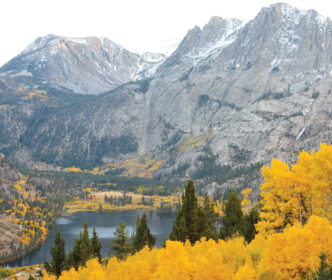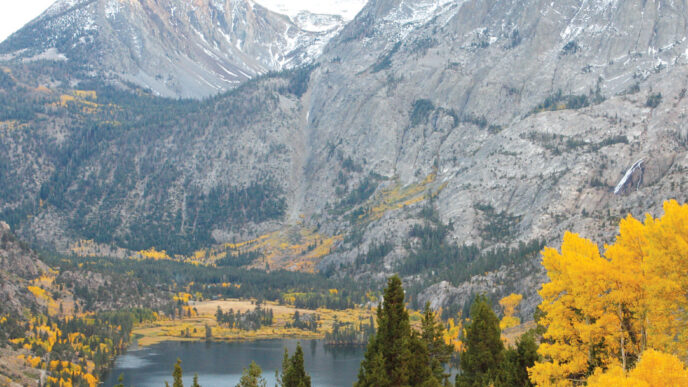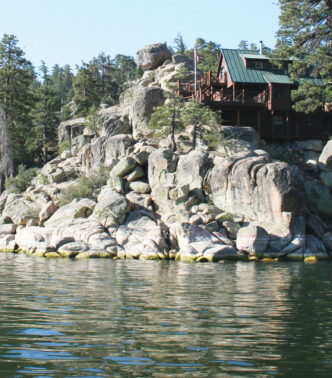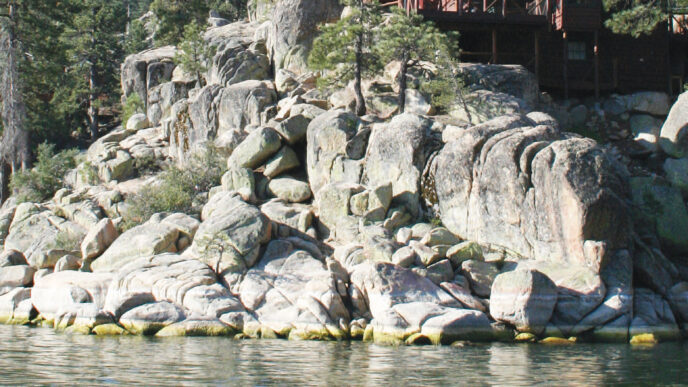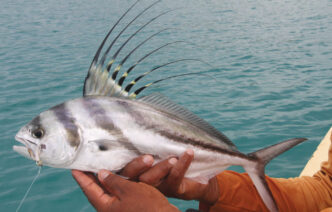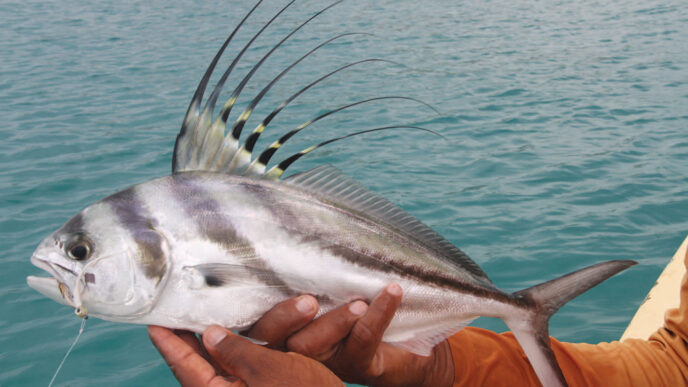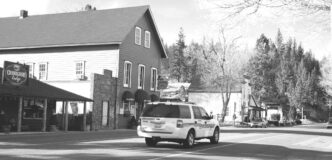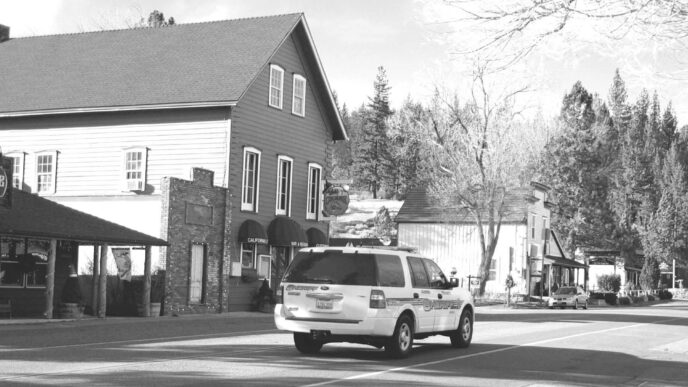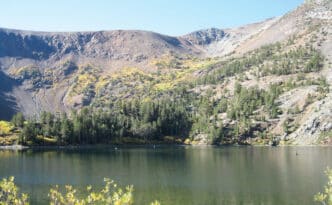sort of scheduling screwup, the fish had been stocked the day before the weekend arrived. (Or that same morning. I was not quite sure.) In any case, the freshly stocked trout reacted to being dumped into a strange stillwater situation by looking for the slightest flow of water, and the whole lot headed into one of the tiny feeder streams, where they milled around without venturing into the lake at all.
This left a small navy of float-tube anglers paddling around the lake trying to catch trout that were bunched up in the mouth of the stream. Had the fish been stocked a few days earlier, things would have been different. Typically, you will find a mix of this week’s planters and some holdover fish left from previous stockings.
Laguna Niguel is just large enough to fish well from a float tube, and the managers have gone to some trouble to make float-tube-equipped anglers feel at home. There’s no provision for launching your own boats, and the few boats offered for rent are powered by electric trolling motors. These are not cheap at $15.00 per hour, or $25.00 for five hours of fishing.
There’s a designated launch point for float tubes, with an air compressor on hand to inflate your tube, if need be. Because this is a pay-to-play venue, the managers charge for pretty much everything. On weekdays, the park admission is just $3.00 per vehicle. It’s $5.00 on weekends. Tube launching requires a fee of $10.00 per tube, and you have to buy a fishing permit on top of that, which is another $22.00 ($20.00 for seniors). That means you’ll have spent something like $35.00 just to get on the water with your fly rod and float tube. It sounds expensive, but the cost is comparable to most of the other winter fishing venues around the Southland and considerably less expensive than a road trip to the Sierra would be.
And float-tube angling at Laguna Niguel is a lot of fun. The lake and the park surrounding it are lush and quite well maintained. The lake is not too big to fish from one end to the other in a tube. If you are going to get serious about the fishing at any of these smaller ponds and lakes (see the “Other Waters” section of this article for two lakes similar to Laguna Niguel), you’ll probably want to equip your float tube with a portable depth finder. It will show you the contour of the bottom and help you find submerged structure.
Because these trout are only days out of a truck ride from the hatchery where they were raised, your choice of flies is pretty simple: attractor patterns such as Woolly Buggers or Marabou Leeches. These fish have lived their entire lives without depending on insect life or tiny baitfish to eat, and one thing that sets hatchery fish apart from their wild cousins is competitive feeding. In the crowded environment of the hatchery, the fish that gets there first gets the food. So all you need to do is offer them something that looks like food. Mostly, I prefer Woolly Buggers with a bit of flash in the tail and overall strong (dark) colors. I’ve also had good fishing using Hal Janssen’s little hard-bodied minnow pattern — the shad colored one, in particular. Other good flies are small Clouser Minnows and Bob Slamal’s White Fly.
The flies listed above, plus flies such as the Hornberg and other patterns that imitate minnows, will draw strikes from trout in most stillwater situations. Probably the best way to fish these flies, and certainly the easiest, is by rigging up with a sinking line and back trolling in a float tube.
Laguna Niguel trout maybe just a little different from those you’ll find in most winter still waters, though. It will surprise anglers who are used to thinking of hatchery trout as dumb and clueless about insect life, but Laguna Niguel is famous as a good, if not great midge fishery. Indeed, the lake has a very well-developed midge population, and winter hatch activity quickly alerts even the most recently released trout that these minuscule creatures are good to eat.
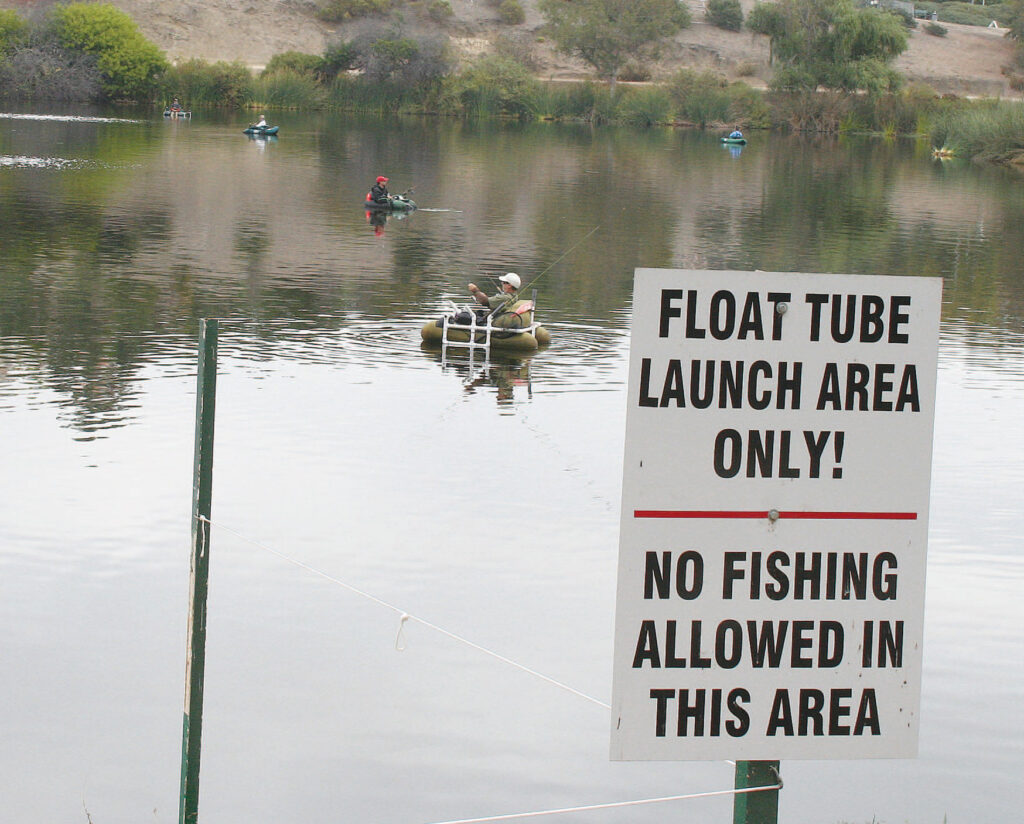
As I understand it, the best method of midge fishing at Laguna Niguel would make a Crowley-trained midge angler feel right at home. By suspending one or two midge patterns under a strike indicators and getting the lower midge to hang just inches off the bottom, you can catch some huge rainbow trout on size 20 and smaller flies. I have nothing in the way of hot midge patterns to suggest here — you’ll have to make your own choices. However, I have heard that beadhead midge patterns using glass beads in different colors are good options.
I would also suggest you try to fish here on weekdays. I suspect that Wednesdays would be crowded, because the fish are normally stocked on Tuesdays, so Monday or Thursday would be my choices. You’ll save a couple of bucks on park entrance fees on weekdays and experience less angling pressure, as well.
I also wouldn’t rule out fishing in poor winter weather. Because Laguna Niguel is within a few miles of the Pacific Ocean, you can count on fog and low clouds much of the time. And a day that is cool, damp, and perhaps has persistent drizzle, enough that you have to wear a rain jacket in your float tube, has the exact conditions you need for good winter trout fishing.
One thing you’ll have to get used to is other float tube anglers using not fly rods and flies, but spinning gear and bait or lures. Fly anglers aren’t the only fisherfolk who’ve adopted the float tube, and there may be days when you and your fly rod are a distinct minority among the belly-boat crowd there.
The Summer Season
While the trout fishing at Laguna Nigel Lake can be great during the winter months, it is low enough in altitude that for a large part of the year, it simply gets too warm to support trout. From about the end of April until stocking starts sometime in November, the lake serves as a recreational bass and panfish fishery.
When the lake’s managers are not stocking trout at Laguna Nigel, they emphasize the angling for bass and their smaller cousins. Unlike the trout, these are wild fish that reproduce naturally in the lake. There are even signs posted to remind folks that fishing for largemouth bass here is strictly catch-and-release. You can take home bluegills and crappies for a fish meal, but you better respect the zero kill status of the largemouths at Laguna Niguel Lake. The lake certainly has a reputation for producing some big bass. There are a few photos in the store and a couple of mounted bass that tell you that you are in serious bass country. The day before my last visit to Laguna Niguel, some fellow caught a largemouth weighing nearly eight pounds, and another angler took home a crappie weighing just under two pounds.
Your customary collection of bass patterns will certainly work here. A fair amount of overhanging brush and tree limbs in different parts of the lake provide cover for the fish, and the tules around the larger of the islands in the lake look like perfect cover for bass and bait. You can get on the water at 6:00 A.M. in the summer, but while the park stays open until 9:00 P.M., the fishing stops at 5:00. This will prevent you from fishing the evening hours, which are often the best time of the day for targeting bass.
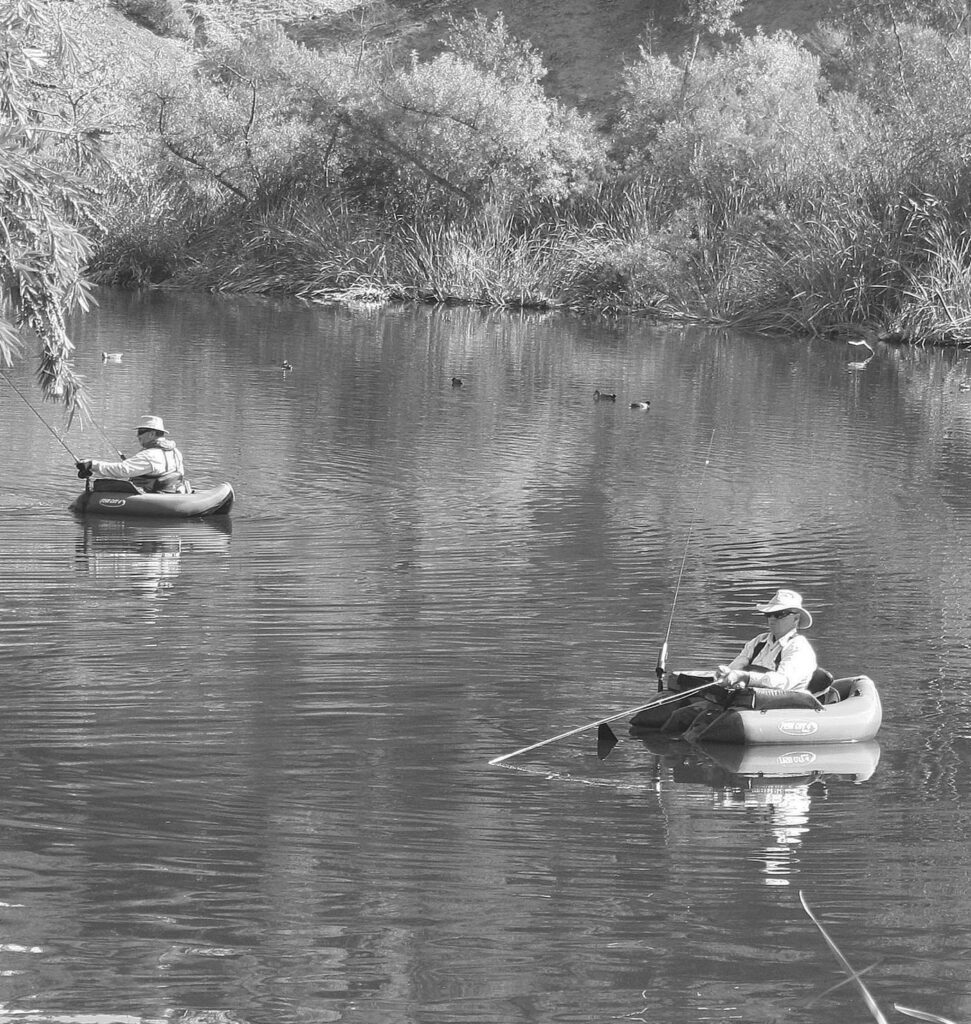
As with the winter trout fishing, overcast mornings with a bit (or a lot) of fog offer the best bet when angling for any of the warmwater species. Once spring warmth turns into summer heat, you’ll need all the cloud cover you can get. Early in the morning or at any time that it is overcast, top-water action can be great fun. Casting bass poppers and other floating flies and being able to see the explosive take of a largemouth bass is exciting. I tend to fish solid-color poppers, either yellow or a green frog color, but if the bass are in the mood, you can catch them on just about any color.
On the other hand, if the sun comes out, you’ll want to go deeper. I’ve had great success on ponds of Laguna Niguel’s size and depth when fishing crayfish patterns on a sinking line. Baitfish streamers will also work well, as will the trout standby, the Woolly Bugger.
For the bluegills, your collection of trout flies is perfect. The only thing I would add is a few tiny cork popping bugs, size 10 or 12. Actually, just about any nymph pattern in your boxes will work. I personally like fishing a lightly weighted Hare’s Ear Nymph, size 12, for bluegills. Crappies tend to switch from insects to smaller fish very early in their life, so tiny streamers that look like either little shad or small trout will work on these critters.
Two Other Options
A couple of other pay-to-play lakes allow anglers to fish from float tubes. Both are small, and one has plenty of half-drowned trees and bushes in it, ideal cover for fish and accessible to float-tube equipped anglers.
Corona Lake, http://www.fishinglakes.com/locations/corona-lake, allows both float tubes and private boats and has some wonderful flooded trees and brush in the east end for the bass angler. A sister lake to Corona, about twice the size of Laguna Niguel, is Anaheim Lake, http://www.fishinglakes.com/locations/anaheim-lake. It allows float tubes, kayaks, and pontoon boats.
There are other winter trout destinations in Southern California, but they either don’t allow fly rods at all (believe it or not) or they are usually stocked with smaller trout. For my money, that makes Laguna Niguel a place worth considering, especially if you live in Orange County or the southern side of the Los Angeles area.
If You Go . . .
For general information about Laguna Niguel Regional Park, visit http://www.ocparks.com/lagunaniguelpark. For the Web site of the lake and its fishing opportunities, go to http://lagunaniguellake.com/index.html. Most of the anglers in the Los Angeles or Orange County areas can take the 5 Freeway south into Orange County, then take La Paz Road. It is four miles to the park entrance. Fishing permits for Laguna Niguel are adults, $22.00; seniors 62 and older, $20.00; kids age 3 to 11, $15.00. No state fishing license is required here or at the other lakes mentioned in this article. A float-tube launch permit is $10.00 at Laguna Niguel. The park entrance fee is $3.00 weekdays and $5.00 on weekends. For more information, phone (949) 362-9227 or visit the lake’s Web site.
Richard Alden Bean






